How Moral Orel Helped Pioneer The Sad-Com
A lot of the time people watch cartoons to laugh. They want to have a fun, silly time and escape from the drudgery of real life. However, there’s been a growing trend in the past few years where cartoons may dress themselves up as something cute and jovial, but in reality they’re devastating gut punches that explore the infallibility of human nature and the mélange of lies that people can prop themselves up on in order to get by.
Cartoons have come a long way from simple premises like a coyote creatively trying to catch a roadrunner. Television is now at the point where Wile E. Coyote would sincerely contemplate ending his life as he engages in stark conversations with himself over whether he’s wasted his life and if he’ll ever amount to anything. Animated series aren’t just about laughs anymore.
These are obviously incredibly heavy themes and many turn to animated comedies for escapism, rather than meditations on suicide, drug overdoses, or sexual abuse. Comedies continue to push the envelope and get more confident dabbling in dark territory, but now it’s these moody, emotional experiments that garner the most acclaim and acts as some kind of indication that a show is striving to be more. It’s been very exciting to see this push towards “sad-coms” with more dimensional and honest characters and stories, but it hasn’t been easy to get to this point.
Now “sad-coms” can be seen as a mark of quality and animated series like BoJack Horseman, Rick and Morty, The Midnight Gospel, and many others have been heralded for approaching more uncomfortable subject matter. Despite the critical acclaim that these series have earned for their bravery, it’s the very same darker impulses that are what ended what’s arguably the formative program in the “sad-com” genre, Moral Orel.
Moral Orel looks rather innocent at first glance. It adopts a clay-based stop-motion animation style that conjured up many comparisons to Davey & Goliath, even if the two shows shared very little else in common between their DNA. Dino Stamatopoulos’ series initially began as a satire of sitcoms, namely Leave it to Beaver, with Iggy Pop inexplicably eyed to be the star. After several pivots the series turned into Moral Orel, which ramped up the series’ focus on religion and turned it into the its priority.
Moral Orel is set within the Christian Protestant town of Moralton and is largely seen from the perspective of an innocent, impressionable young boy named Orel Puppington. Over the course of the series, Orel slowly becomes disillusioned and loses his faith, largely because of his broken father and the other unhealthy relationships that exist around him. Everyone may wear a big smile, but it becomes obvious that everyone in Moralton doesn’t just have a few skeletons in their closets, but they’re hiding an entire graveyard in there.
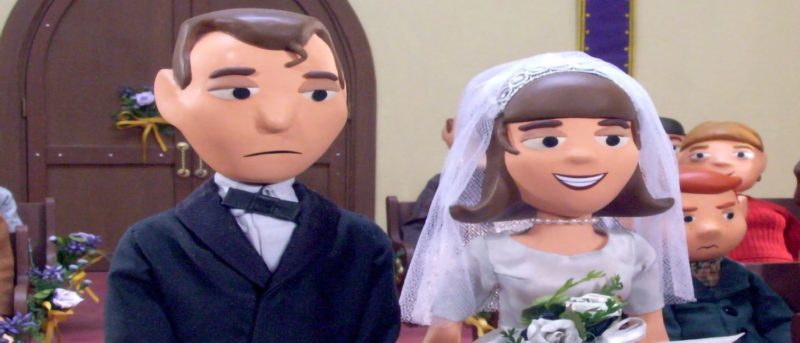
It’s very easy on a surface level to say that Moral Orel is a critique on religion, but a deeper examination makes it obvious that the show has much more to say than that. Moral Orel exposes the hypocritical nature of organized religion, but it’s less an attack on Christianity as it is a takedown on institutions and people of power and influence in general.
The first season of Moral Orel is the most accessible and each episode deconstructs terribly skewed misinterpretations of good deeds. A lot of the humor in the show’s first year grows out of this schism where Orel’s naivety leads to him engaging in adult or lascivious acts, but oblivious to this because of his altruistic intentions. Moral Orel’s first season is still very good and it’s the type of show that one would expect when they hear that a claymation property is airing on Adult Swim. It’s worth noting that Stamatopoulos wrote this first season in a tight window of one month, which explains why the characters are mostly static and there’s more of a formula present than in later seasons.
It’s interesting to note that Dino Stamatopoulos’ favorite season of The Simpsons is the show’s first year and he looked towards the realism of those episodes for inspiration. Stamatopoulos was eager to depict a real family and characters more than he was interested in cramming an episode full with as many jokes as possible. Initially, this approach helped Moral Orel develop such a strong style and core cast, but it was Stamatopoulos’ tendency to lean in even harder to this that made Moral Orel such the prototypical “sad-com.” Stamatopoulos has humorously said that Moral Orel practically became a “Reverse Simpsons” in terms of how the Puppington family begin as cartoonish caricatures and then turn startlingly real, whereas The Simpsons slowly shed its realism over the years.
Plenty of Moral Orel’s first season is steeped with an inherent sadness, but it’s the season finale, “The Best Christmas Ever,” (which Adult Swim happened to air as the first episode, much to many people’s confusion) that offers the best impression of the dark places that the series is headed. It’s also the first time where divorce is approached in some context and the painful existence of Clay and Bloberta Puppington is truly acknowledged. With this grim finale being a particular favorite to Adult Swim’s Mike Lazzo, Moral Orel’s second season pushed further in this direction. The fact that Lazzo thought Moral Orel’s first season was the show’s funniest and Stamatopoulos felt the opposite speaks to the larger dissonance that would eventually lead to the show’s dissolution.
Moral Orel’s second season took a conscious step towards characterization over easy gags and the series started to turn more articulate and morose as a result. The show started to tackle topics like repressed homosexuality, abortion, rape, and self-harm, not just as crude fodder for humor, but as mature, considerate storylines unlike anything else seen on an animated television series at the time. Even now, these topics may be less taboo, but the authentic nature present in Moral Orel is what makes it so effective. There’s such palpable pain and shame in the characters—particularly Clay Puppington—that brings such a vulnerability to the series. The third season is more likely to elicit tears from the audience than it is laughter.
The true turning point for Moral Orel is the two-part finale for the second season, “Nature.” Orel goes on a hunting trip with his father, Clay, wherein his dad’s pain and alcoholism comes to a frightening head. Clay’s hate-filled monologue that he delivers to Orel is such a sad speech that is aching with realism. Clay’s confession ends gunfire and the dynamic between the two of them—and the entire series—irrevocably changing.
“Nature” is absolutely devastating, but at the time Lazzo heralded it as the best thing that had ever aired on television. This staunch support for the bleak experiment gave Stamatopoulos the impression that he should push the third season even further. This is what Lazzo wanted in a sense, but he was interested in sporadic sadness and not just a constantly depressing experience. However, after the hunting trip in “Nature” Stamatopoulos felt it’d be disingenuous to go back to the sillier, broader place of the earlier seasons. Just like in real life, the series couldn’t go back once that genie was out of the bottle.

Moral Orel’s second season ends on a heartbreaking and surprising note, but the beginning of the third season immediately registers as a more depressing story as it kicks off with the music of The Mountain Goats’ “No Children” instead of the usual cheerful theme song. The events of the season premiere, “Numb,” do not hold back and they truly hammer in how miserable Clay and Bloberta’s marriage is. Stark cinematography depicts their union as being no different than corpses in their graves. A lot of the pain of Moralton remains unspoken during the first two seasons as most of it is filtered through Orel’s perspective. Season three lets that dam burst and delivers a flood of emotions.
The use of The Mountain Goats could perhaps be considered a mild precursor to how something like Rick and Morty would effectively utilize melancholy bands to accentuate the pain of their its own pain. This depressing soundtrack throws the audience into a deeper spiral of despair. It’s difficult to watch Moral Orel and not get bummed out when you’re going into the series with a cheery disposition, but it’s a show that could actively be dangerous to watch when you’re in a fragile emotional state.
BoJack Horseman is a gauntlet to get through, but it at least is able to tell a full story that allows the audience to heal. At a point the joke of Moral Orel almost becomes how there are no jokes in the show. In a classic exchange between Dino Stamatopoulos and Mike Lazzo over the third season episode, “Numb,” Lazzo lamented that there was only one joke in the script. Stamatopoulos’ wry response was, “Well, tell me where the joke is and I’ll take it out.” Stamatopoulos was joking, but it speaks to how as the show progressed he was less interested in gags and more concerned about the characters and their emotional arcs.
Season three of Moral Orel looks at a different character in each episode and uses a brilliant non-linear structure where each episode utilizes unusual chronology to paint a much more layered picture of the shared pain in this community. Moral Orel slowly expands its perspective to look at the entire town and the flawed nature of everyone, not just its main character, which is an approach that’s also been utilized in BoJack Horseman, Rick and Morty, or South Park.
Stamatopoulos admits that Moral Orel evolved into a different show from what he originally conceived, but it’s a transformation that seemed organic to the series and the places that his interests were taking him. Now it’s not exactly unusual for a series to take half a season to reveal its true nature or what it really represents. As the third season became more severe, it was eventually the combined efforts of the scripts for “Numb,” “Alone,” and “Raped” that led to Lazzo prematurely pulling the plug on the series and cutting the 20-episode season short. These episodes unpack incredibly traumatic experiences that all stem from unhealthy sexual events. Characters work through their pain as they sympathize with their sexual abusers, deal with unnecessary sexual surgeries, or develop regressive mental compulsions.
At this point Lazzo felt like he had no choice but to cancel the series since the unproduced scripts for the rest of the season continued to push the envelope in aggressive ways. Cancelled storylines from the rest of the third season included Orel’s grandfather moving into his room, only to pass away, and to send Orel into a goth phase as he grapples with death on a very personal level.

These stories are certainly shocking, but what’s important to recognize is that Moral Orel’s third season doesn’t just turn into melodramatic emotional porn where everyone is given some arbitrary affliction. Stamatopoulos uses the pain of these characters to inform the stories that he tells and this new vulnerability of his cast opens Moral Orel up to much more ambitious and layered stories. When the show acts like a lowbrow stereotype, the storytelling is limited by its own restrictions. It’s this more mature understanding of the characters that actually motivates the series’ scope to evolve and not become repetitive. It’s this same level of catharsis that continues to push shows like Tuca & Bertie or Rick and Morty to deepen.
Furthermore, Moral Orel may have gotten too intense for Adult Swim, but Stamatopoulos always had a five-season redemptive arc in mind for Orel, which would have eventually gotten him back to a positive place. The plan was for Orel to learn and grow along the way and be able to productively heal in a way that hasn’t been possible for the other members of Moralton. It’s understandable that Adult Swim got cold feet over the content, but they should have put a little more faith in Stamatopoulos’ ability to bring some closure to his vision (although to their credit a prequel special happened years later). Imagine how frustrating it would be if Rick and Morty or BoJack Horseman were cancelled after their second seasons and they weren’t allowed to properly conclude their stories.
Curiously, it’s the more depressing and realistic elements that were also the turning point for BoJack Horseman, but for that series it was when people started to grow an appreciation for the show. Similarly, Rick and Morty was popular from the jump, but it’s “Rick Potion #9” that was regarded as the first true classic and it’s when the show’s dips into more soul crushing territory that it’s often at its most poignant and powerful. It’s the same brand of content that would ultimately lead to Moral Orel’s end, but it’s worth noting that there were never protests or public outcry over the show’s subject matter. It was just a lack of viewership and that Lazzo recognized the dark turn that the show was on that led to its early demise.
Considering that Adult Swim would later become the home to Rick and Morty and flourish in this environment with similar content, it’s fascinating to wonder that if Moral Orel had simply premiered several years later if it would have reached a greater audience and appreciation. Now the show is viewed in incredibly high regard and it’s reached a larger audience than when it initially aired, but it’s also hard to not notice the trend of comparable “sad-com” content that would follow in the wake of Moral Orel.
This is not to necessarily say that Moral Orel specifically influenced something like The Midnight Gospel or Undone, but it’s more a reflection of how society is in a better place to get comfortable with such brutal material. Viewers are hopefully able to gain acceptance and compassion while they confront their own downfalls when they watch BoJack Horseman dig into suicide or drug addiction, when Tuca & Bertie explores social anxiety and sexual abuse, or even when programs like Harley Quinn or Final Space can confront depression and abandonment issues.

This trend surely also has to do with the more sophisticated direction that television has increasingly headed down where flawed protagonists have become the norm. However, this is still typically reserved for live-action dramas, not animated comedies. Society as a whole has also gained a deeper understanding and acceptance of mental illness, which has slowly trickled into television. It’s no longer as risky for characters in a comedy to deal with difficult prognoses or traumatic experiences. Now it’s seen as that burst of reality that enters life when you least expect it, for both better and for worse.
There’s now precedent and there are coping mechanisms in place to help audiences heal alongside BoJack or understand Rick’s self-destructive impulses, but during the time of Moral Orel it was a much starker reality. Audiences didn’t know how to respond at the time and just like how the experience in the series marks a moment when Orel opens his eyes and sees the world for how it really is, the dark shift that Moral Orel’s third season takes marks a similar loss of innocence for animated comedies. The world now knows how dark and real cartoons can get and in the ashes of Moral Orel there have been other sad-coms that could be born and help audiences manage their anxiety and confront their demons.
Stamatopoulos also seems to have gained some clarity from his experience on Moral Orel and understands that people don’t want dark content during dark times. Arguably, the world is in one of its darkest periods ever, so while there can be a “misery loves company” aspect to watching other flawed characters, Stamatopoulos also realizes that a radical construct around the depression can sometimes provide enough light to balance out the dark. Obviously BoJack Horseman, Rick and Morty, Tuca & Bertie, The Midnight Gospel, and Futurama all tackle absurd, heightened premises that help shoulder the depression that they wallow in. Moral Orel doesn’t have such a buffer (and it’s also the reason that Stamatopoulos credits the stop-motion Anomalisa—which he produced—for not being more successful).
It’s a valid note and one that Stamatopoulos seems to have taken to heart since his follow-up series, Mary Shelley’s Frankenhole and High School USA! both heavily embraced absurdity, whether in concept or style, that made it more palpable for Stamatopoulos to approach topics like abortion or sex workers (although both series did receive their own share of censorship). Moral Orel helped prove that audiences are receptive to such material, but without the proper relief it can be too much to bear. After a decade of playing around with the format it appears that animated “sad-coms” haven’t just found a healthy rhythm, but are actually thriving and seen as some of the most fulfilling and ambitious programs that television has to offer.


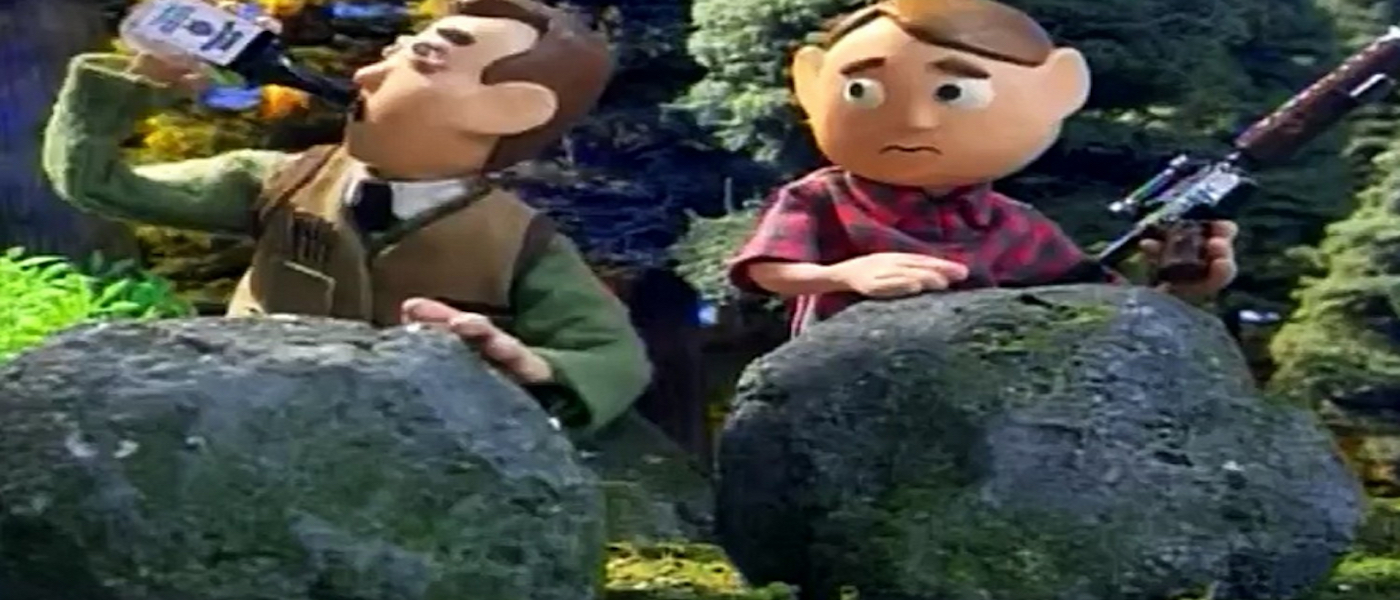


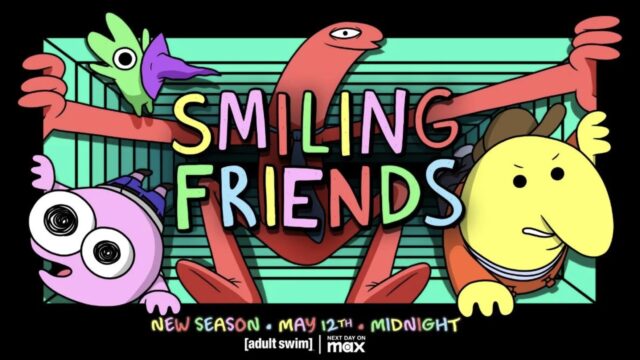















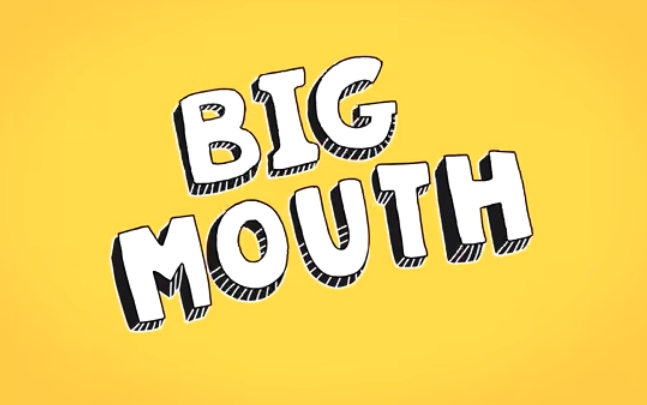






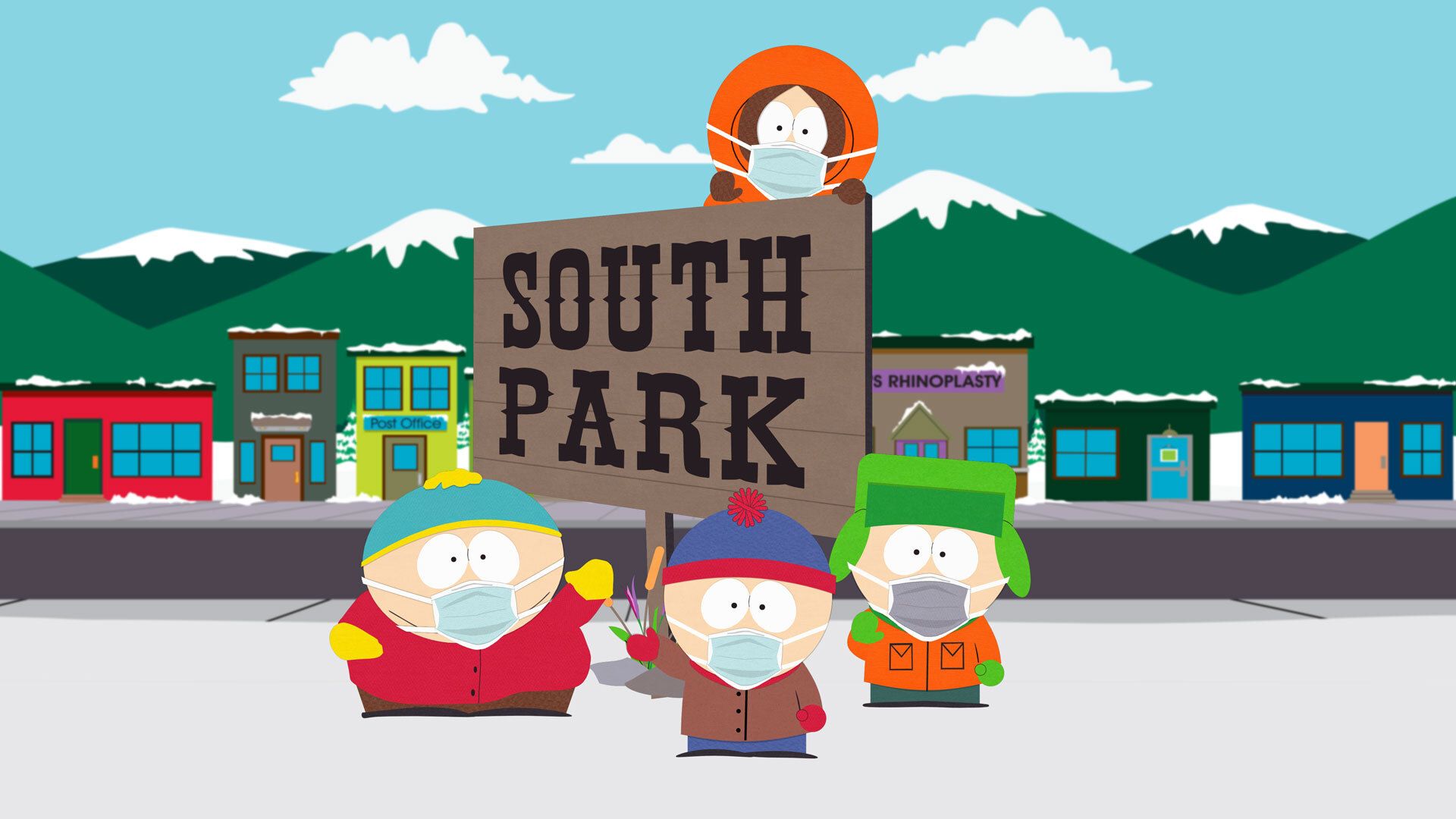
No convictions means innocent